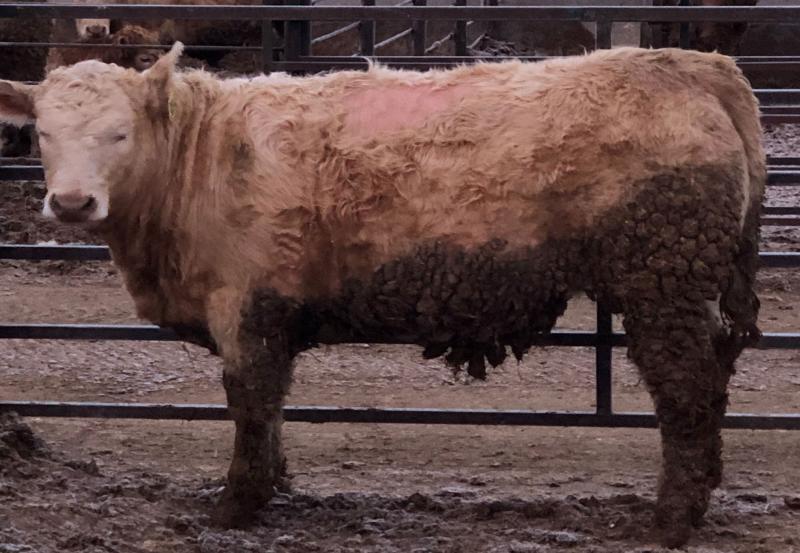Seeing cattle rubbing hair off due to lice infestations can be extremely frustrating. Not only are the cattle damaging fences and equipment, there also can be performance losses and health issues not to mention that the cattle are simply not as visibly appealing, which can be very important for seedstock producers or feeders selling backgrounded feeders.
There are two types of lice that can affect cattle: chewing lice and sucking lice. Chewing lice are the most commonly occurring type. Sucking lice can cause the most performance losses because they feed directly on the blood or the animal.
Why Do We See More Lice in the Winter?

Lice populations often increase during the winter months due to the animal’s hair coat providing additional insulation from cold temperatures. For that reason warmer temperatures in the spring usually result in reduced numbers of lice. Management practices can also play a role in the increased incidence of lice from during winter.
Producers often check cattle for internal and external parasites at weaning or when cattle arrive in the feedlot with systemic parasite control options such as one of the avermectin products. These products usually work well on both types of lice, however treating too early in the fall may provide an opening for lice numbers to rebound as temperatures fall. Also, injectable systemic parasite products, while effective on sucking lice, do not offer the same level of control for chewing lice.
Winter-time lice control measures involve the use of non-systemic insecticides containing pyrethroids. Systemic avermectin pour-ons can be used provided a similar product was used in the fall to kill grubs. If systemic products are first used during winter, there is an increased risk of host-parasite reactions from dying grubs causing swelling around the esophagus or spinal cord.
How to Maximize Treatment Effectiveness
It is critically important to follow treatment procedures closely to maximize treatment effectiveness against lice. Gaps in treatment coverage allow an opportunity for lice to re-infest the cattle resulted in wasted time and resources.
Regardless of product choice, dosage must be adequate for the size of animal being treated. Under-dosing could result in insufficient control and cause other animals in the group to be re-infested. For the same reason, every animal in a pen or group needs to be treated. Missing even one keeps the door open for populations to rebound. Once a pen has been treated, avoid introducing new animals into the group, unless you plan on re-treating the entire pen. Try to spread out the dosage in as long a line down the animal’s back as possible to increase the amount of body surface treated.
Follow any label directions given for re-treatment windows. Non-systemic pyrethroid products are effective against adult lice, but not against eggs or larvae. Many labels for those products call for a second treatment after 14 d. Some products combine a pyrethroid with an IGR (insect growth regulator) that is effective against the immature stages to avoid the need for re-treatment. If symptoms are observed, producers should consider combining a lice treatment with any other planned cattle processing event such as re-implanting or booster vaccinations.
Another strategy that could be useful is adding a back-rubbers to pens. Cattle treat themselves reducing the labor requirements, although the devices do need to be periodically re-charged with insecticide. Effectiveness of this method depends not only on the insecticide used but also on how many cattle in the group use the device and the frequency of use.
Finally, visiting with the herd veterinarian is another important step if lice control is not meeting expectations. They can help diagnosis whether or not treatment failure is due to issues with dosages or timing, breakdowns in exposing infected and previously treated cattle, potential resistance challenges, or combinations of these factors.


